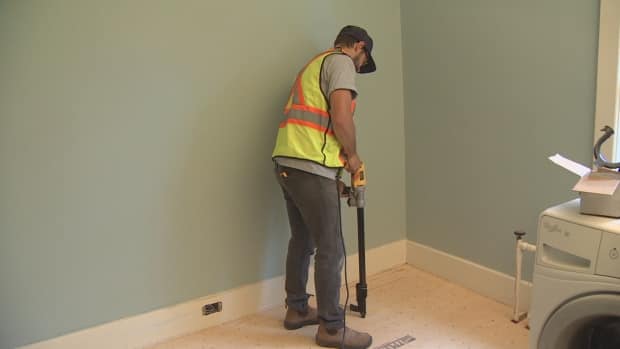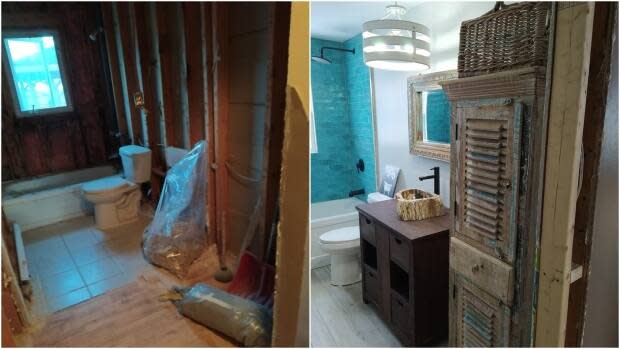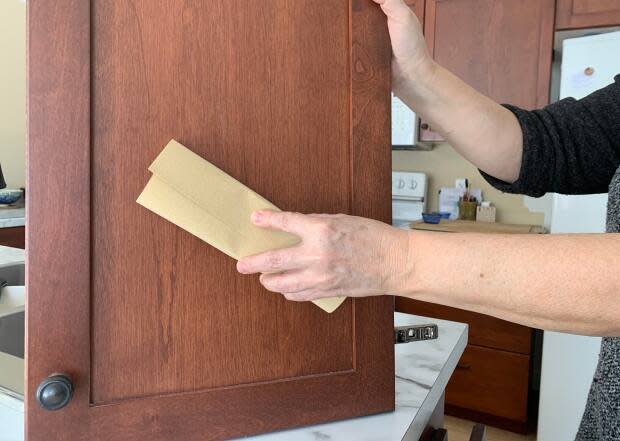DIYing during COVID-19? How to avoid these common mistakes

It's a North American phenomenon: People across the continent stuck inside during COVID-19 pandemic restrictions are renovating their homes, and P.E.I is no different.
"We're up at least 40 per cent over last year," says Ammie Jeffery, retail manager at House of Excellence in Charlottetown, which sells Benjamin Moore brand and other high-end paints and painting gear.
"It's crazy. I've never seen anything like it," said Rob Lewis at the nearby Sherwood Timber Mart. He has been in hardware and building supply sales for 38 years and said he's never seen demand so high.
"Right now, most of the contractors are so booked, they can't keep up," he said. Customers are telling him they're spending money on renos that they normally would have used for a vacation, and doing a lot of the work themselves.
But even seasoned do-it-yourselfers can sometimes miscalculate. Add the adrenaline rush of an exciting new project fuelled by Pinterest-perfect "after" photos, and the margin of error for first-timers can grow.
Here are some common mistakes to avoid if you're going to do it yourself.
Do your research, and put safety first
Experts agree many of the mistakes they see spring from the same sources: lack of knowledge and inadequate planning.

Consider whether you need a municipal permit to finish that basement or attic space, Lewis said.
Read the fine print. Some flooring is covered by the warranty only if installed by a certified professional.
Then, discuss your project with a salesperson where you're shopping. Some are seasoned experts with years of knowledge, and likely have experience with the very task you are undertaking or product you're buying.
Once customers have the supplies they need, Lewis recommends they watch manufacturer's videos on proper installation.
With the skyrocketing price and scarcity of some building supplies like lumber, the old adage "measure twice and cut once" has never been more important.
"This time last year, an eight-foot two-by-four would have been $3.69 — that same eight-foot two-by-four is $7.99 [now]," Lewis said. The price for some sheets of plywood has more than doubled too.
Safety is an often-overlooked consideration, Lewis points out. Remember safety gear including glasses, gloves and a good first-aid kit. If you are getting help from a friend or neighbour, consider that you are responsible for their safety while they are on your property.
Check first, toss or smash later
One mistake Lewis has seen a lot of during the pandemic is DIYers demolishing first, then going shopping only to find there's a shortage of what they need. A few months ago, there was a long wait for toilets. Right now, Lewis said it's bathtubs.
"With COVID, the supply chain is very tight ... tubs right now are 12 to 14 weeks away," he said. Twelve tubs that just arrived in his Timber Mart are all spoken for, he said, which is unusual.
"If you're doing DIY, it's best to do research. Know what you need; don't tear anything apart unless you have what you need," Lewis said.

"I've seen people take their toilets out, even throw them away, and then come in," he said — only to find there are none available for weeks.
Another important tip: If you are demolishing a wall, you may need an expert to determine if it is a load-bearing wall needed for the building's structural integrity. Don't pick up the sledgehammer until you are sure.
Surface prep is 80% of the job
Over at the paint store, improper preparation of surfaces is the biggest mistake Jeffery cites.
"We always say 80 per cent of your job, you're never going to see ... it's a lot of unseen preparation."

Read the directions on the product, and take time to watch videos or read information the company may have online with helpful tips.
Not cleaning walls and cupboards with a degreaser such as TSP and then rinsing it off is a common mistake, Jeffery said. So is not sanding furniture before applying a paint or finish.
"Right now there's a big surge in DIY to paint cupboards," Jeffery noted. Customers will often remove cupboard doors and get them spray-painted professionally, then paint the cupboard boxes themselves in the same colour — except, it often doesn't match exactly, and people are unhappy with the result.
If customers are getting doors painted, she recommends having them done first, then bringing one to the paint store where staff can match paint for the boxes as closely as possible.
For those who want to save money by painting their own cupboard doors, Jeffery recommends first bringing one to the paint store for advice on the right products to prep the surface. The doors may need different treatments depending on whether they have been painted, stained or lacquered.
What's under there?
Another common DIY problem is trying to paint water-based paint over an older oil-based paint, which is not uncommon in P.E.I.'s many heritage homes. Water-based paints may bubble or flake off in this case.

"A lot of people will get halfway through a paint job and realize they never tested the wall first," Jeffery said. You'll have to sand off the bubbling paint and start over, priming with the correct primer.
There's a shortage of popular paints at House of Excellence for the first time since the pandemic began, Jeffery said. With a post-holiday surge in DIY interest and tighter restrictions on P.E.I. keeping people at home, there's been a sharp upswing in sales.
"Demand right now seems to be higher than supply," she said. "This is the first time we've run into this, actually, in the whole 12 months."
More from CBC P.E.I.

